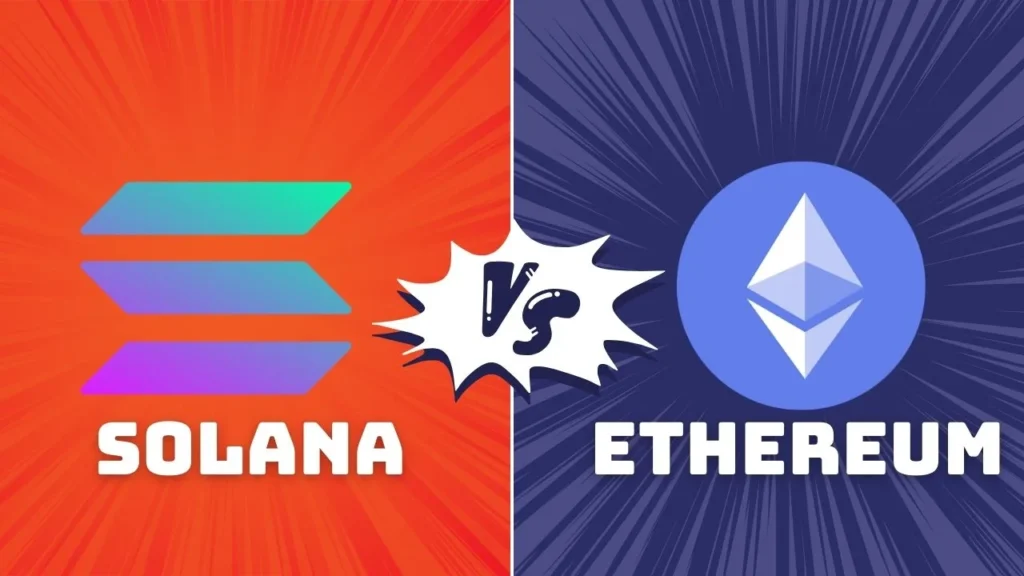
The cryptocurrency landscape is a dynamic arena where innovation is the key to survival. Two titans, Ethereum and Solana, have emerged as dominant forces, each with its unique strengths and aspirations. This article delves deep into the heart of this rivalry i.e. Solana vs Ethereum, examining their core technologies, ecosystems, and market positions to help you determine which blockchain is best suited for your needs in 2024.
Read More interesting articles on trendystring.com
Ethereum: The Grand Old Man of Crypto
Launched in 2015 by a visionary team led by Vitalik Buterin, Ethereum pioneered the concept of smart contracts, transforming the blockchain industry. Its ability to host decentralized applications (dApps) has made it the go-to platform for projects ranging from decentralized finance (DeFi) to non-fungible tokens (NFTs).
Ethereum’s transition from Proof of Work (PoW) to Proof of Stake (PoS) with the launch of the Beacon Chain in 2020 was a monumental step. This shift aimed to enhance scalability, reduce energy consumption, and bolster security. While the journey to full PoS completion is ongoing, Ethereum’s robust community and developer ecosystem continue to drive its growth.
Solana: The High-Speed Challenger
Solana, founded by Anatoly Yakovenko, burst onto the scene in 2020 with a bold promise: unparalleled speed and scalability. Its unique Proof of History (PoH) consensus mechanism, combined with PoS, enables it to process thousands of transactions per second. This lightning-fast performance has attracted developers seeking to build high-performance dApps.
Solana’s ecosystem has grown rapidly, with projects spanning DeFi, gaming, and NFTs. Its lower transaction fees compared to Ethereum have made it an attractive option for users and developers alike. However, the network has experienced outages, raising concerns about its stability and reliability.
Key Differences: Solana vs. Ethereum
- Consensus Mechanisms: Ethereum’s PoS relies on validators staking their ETH to secure the network. Solana’s PoH creates a verifiable record of events, enhancing transaction speed and finality.
- Throughput and Gas Fees: Solana’s high throughput and low transaction costs are its standout features. Ethereum, while improving with PoS and layer-2 solutions, still faces congestion during peak times.
- Smart Contracts: Ethereum’s Solidity language has a mature developer community. Solana’s Rust-based approach offers performance advantages but is still maturing.
- Ecosystems: Ethereum boasts a vast and diverse ecosystem with established giants like Uniswap and OpenSea. Solana’s ecosystem is growing rapidly, with projects like Serum and Raydium gaining traction.
- Security and Decentralization: Ethereum’s long-standing network and large validator base contribute to its security and decentralization. Solana’s centralized validation model has raised concerns, though the project is actively working to address this.
Investment Perspective
Both Ethereum and Solana have experienced significant price appreciation, reflecting investor confidence in their potential. Ethereum, as the pioneer, benefits from a strong network effect and a large, established user base. Solana’s focus on speed and scalability has attracted a different investor profile.
Conclusion
The choice between Ethereum and Solana depends on your specific needs and priorities. If you value a mature ecosystem, proven security, and a wide range of dApps, Ethereum might be the preferred choice. If speed, low fees, and a platform for cutting-edge applications are paramount, Solana could be a compelling option.
It’s essential to stay updated on the evolving landscape of both platforms, as they continue to innovate and compete for dominance. The future of blockchain technology is bright, and both Ethereum and Solana are poised to play significant roles in shaping it.